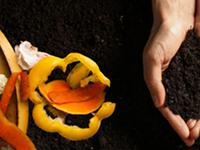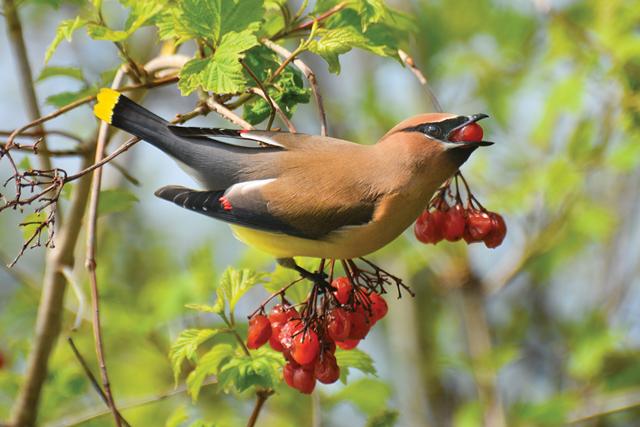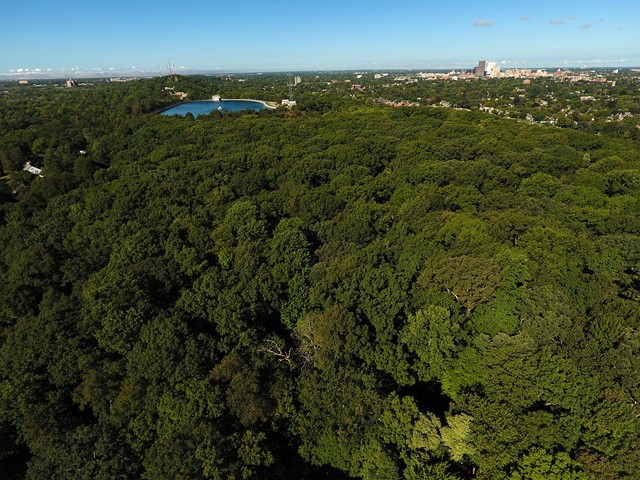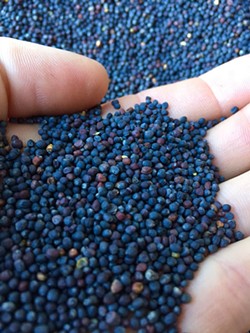[
{
"name": "500x250 Ad",
"insertPoint": "5",
"component": "15667920",
"parentWrapperClass": "",
"requiredCountToDisplay": "1"
}
]
Spring is an exciting time to enjoy the natural world with all five senses, for children and adults alike. Whether you stick to your own backyard or take a hike to one of the region’s wildlife refuges or green spaces, there are many opportunities to see, hear, smell, touch, and taste nature as it wakes up from winter.
Here are a few Earth Month activities that can get the whole family learning about the rhythms of the planet and its inhabitants while thinking about ways people can live in better balance with other forms of life.
See and hear the bird migration
Rochester has already had its share of robins, cardinals, and blue jays — themselves a colorful signal that spring has sprung — scouting locations to build nests in neighborhood trees and pecking for worms in backyards. But there are many more kinds of birds to watch and listen for, if you know the right places.
North America has more than 2,000 species of birds, and about 350 of those are migratory birds, according to the National Audubon Society. If you live near lots of trees or water, chances are you’ll spy a greater diversity of birds traveling to their spring and summer grounds. But you can also take matters into your own hands by visiting some of the established migratory bird stopover points in the region.
New York is situated along the Atlantic Flyway, one of four air routes migratory birds use. Our region is filled with lakes and rivers that attract weary winged travelers during spring migration, which peaks in late April.
Marshlands are prime bird watching spots and locally they include Braddock Bay Park and Montezuma National Wildlife Refuge. Braddock Bay Park on Lake Ontario (199 E. Manitou Road, Greece, 585-225-2000) is home to migrating waterfowl, hawks, and eagles. Montezuma National Wildlife Refuge (3395 Auburn Road, Seneca Falls, 315-568-5987) is a 7,000-acre swampy space with trails and lookouts at the north end of Cayuga Lake that is nationally renowned for its waterfowl numbers.
At each place you can spot massive flocks of snow geese resting and feeding together, for example, which is a sight to behold (and hear) when they take wing together. But be careful not to disturb them and send them into the air — the birds make these stopovers so they can rest for the next leg of their long journeys.
Pack a lunch and dress in layers, and bring along spotting scopes if you have them. Before you go, brush up on bird songs at audubon.org and see how many calls you can identify in the field.
Pro tip: Cornell University’s Lab of Ornithology also provides information on birds and bird identification at allaboutbirds.org, which additionally directs visitors to a smartphone app for bird identification.
Nature in your neighborhood
There are many ways to observe nature close to home, whether you tackle a hands-on project or become better acquainted with the plants and animals surrounding you.
One way to try to attract wild birds to your backyard is by building a safe nesting box.
There are loads of tutorials online, or you can get one locally as part of a Backyard Adventure Kit from Rochester Museum & Science Center, which comes with five days of guided activities and supplies. The Backyard Birder kit is good for all seasons, and includes a bird field guide and field journal, two different kinds of bird feeders, seed and suet, a DIY birdhouse kit, materials for a bird kite activity, and a curriculum. RMSC also offers a kit for fairies and gnomes, which is more imagination and craft-based, but still gets children out exploring nature in their yards. Each kit is $60, $70 if you have it shipped.
One basic way to increase a kid’s interest in the environment — or anyone’s for that matter — is to introduce them to it, by name. Learning how to identify common trees and plants on walks can fuel children’s interest in the natural world. How many native trees can you identify together? Oaks and maples are easy if you look at their leaves, and sycamores are among the easiest to spot by their bark, which is a pale, wavy pattern of white, gray, green, and yellow. And the zesty scent of the bright yellow, spidery witch hazel blossoms is hard to forget.
As part of its Earth Month programming, Impact Earth is offering a free virtual class, “Learn About Local Trees,” at 6 p.m. on April 29. Participants can learn about the anatomy of trees and which ones are common to Monroe County. They’ll also receive a free tree guide. Registration is required at eventbrite.com/cc/impact-earth-month-2022-188109.
What about the first flowers of spring? White snowdrops appear in bunches with droopy bulb-shaped blossoms on short stems. Winter aconite grows in carpets of glowing golden blooms, and crocuses crop up in purple, white, and yellow hues. All are well on their way to pushing stems and blossoms through dirt recently liberated from inches of snow.
Earth Day in the kitchen
In preparation for planting season, Fruition Seeds (7921 Hickory Bottom Road, Naples, is hosting a Seed and Plant Swap on April 8 from 5:30 to 7:30 p.m. People are invited to bring any seeds to share and empty envelopes to take some home. Houseplant cuttings and divided, pest-free perennials are also welcome.
A great way to kickstart kids’ appreciation for nature’s bounty is to involve them in preparing a meal, from garden to kitchen. If you have a garden, getting children involved in growing produce, identifying ripeness, harvesting, and washing and prepping can instill a sense of capability, in addition to an appreciation of what goes into growing food.
If you don’t have a garden, pop by a farmer’s market and let the kids have a say in something they’d like to try. Pick a healthy recipe together and let them help prep a salad, for example. Let them smell and taste the ingredients as you prepare them, and ask questions about what they like.
Complete the cycle by composting food scraps together. Impact Earth is offering a free virtual class at 6 p.m. on April 12, titled “How to Use Compost in the Spring,” which explores how compost can be beneficial for plants and how to best use it at the start of growing season. Register at eventbrite.com/cc/impact-earth-month-2022-188109.
Rebecca Rafferty is CITY’s life editor. She can be reached at [email protected].
Here are a few Earth Month activities that can get the whole family learning about the rhythms of the planet and its inhabitants while thinking about ways people can live in better balance with other forms of life.
See and hear the bird migration
Rochester has already had its share of robins, cardinals, and blue jays — themselves a colorful signal that spring has sprung — scouting locations to build nests in neighborhood trees and pecking for worms in backyards. But there are many more kinds of birds to watch and listen for, if you know the right places.
North America has more than 2,000 species of birds, and about 350 of those are migratory birds, according to the National Audubon Society. If you live near lots of trees or water, chances are you’ll spy a greater diversity of birds traveling to their spring and summer grounds. But you can also take matters into your own hands by visiting some of the established migratory bird stopover points in the region.
New York is situated along the Atlantic Flyway, one of four air routes migratory birds use. Our region is filled with lakes and rivers that attract weary winged travelers during spring migration, which peaks in late April.
Marshlands are prime bird watching spots and locally they include Braddock Bay Park and Montezuma National Wildlife Refuge. Braddock Bay Park on Lake Ontario (199 E. Manitou Road, Greece, 585-225-2000) is home to migrating waterfowl, hawks, and eagles. Montezuma National Wildlife Refuge (3395 Auburn Road, Seneca Falls, 315-568-5987) is a 7,000-acre swampy space with trails and lookouts at the north end of Cayuga Lake that is nationally renowned for its waterfowl numbers.
At each place you can spot massive flocks of snow geese resting and feeding together, for example, which is a sight to behold (and hear) when they take wing together. But be careful not to disturb them and send them into the air — the birds make these stopovers so they can rest for the next leg of their long journeys.
Pack a lunch and dress in layers, and bring along spotting scopes if you have them. Before you go, brush up on bird songs at audubon.org and see how many calls you can identify in the field.
Pro tip: Cornell University’s Lab of Ornithology also provides information on birds and bird identification at allaboutbirds.org, which additionally directs visitors to a smartphone app for bird identification.
Nature in your neighborhood
There are many ways to observe nature close to home, whether you tackle a hands-on project or become better acquainted with the plants and animals surrounding you.
One way to try to attract wild birds to your backyard is by building a safe nesting box.
There are loads of tutorials online, or you can get one locally as part of a Backyard Adventure Kit from Rochester Museum & Science Center, which comes with five days of guided activities and supplies. The Backyard Birder kit is good for all seasons, and includes a bird field guide and field journal, two different kinds of bird feeders, seed and suet, a DIY birdhouse kit, materials for a bird kite activity, and a curriculum. RMSC also offers a kit for fairies and gnomes, which is more imagination and craft-based, but still gets children out exploring nature in their yards. Each kit is $60, $70 if you have it shipped.
One basic way to increase a kid’s interest in the environment — or anyone’s for that matter — is to introduce them to it, by name. Learning how to identify common trees and plants on walks can fuel children’s interest in the natural world. How many native trees can you identify together? Oaks and maples are easy if you look at their leaves, and sycamores are among the easiest to spot by their bark, which is a pale, wavy pattern of white, gray, green, and yellow. And the zesty scent of the bright yellow, spidery witch hazel blossoms is hard to forget.
As part of its Earth Month programming, Impact Earth is offering a free virtual class, “Learn About Local Trees,” at 6 p.m. on April 29. Participants can learn about the anatomy of trees and which ones are common to Monroe County. They’ll also receive a free tree guide. Registration is required at eventbrite.com/cc/impact-earth-month-2022-188109.
What about the first flowers of spring? White snowdrops appear in bunches with droopy bulb-shaped blossoms on short stems. Winter aconite grows in carpets of glowing golden blooms, and crocuses crop up in purple, white, and yellow hues. All are well on their way to pushing stems and blossoms through dirt recently liberated from inches of snow.
Earth Day in the kitchen
In preparation for planting season, Fruition Seeds (7921 Hickory Bottom Road, Naples, is hosting a Seed and Plant Swap on April 8 from 5:30 to 7:30 p.m. People are invited to bring any seeds to share and empty envelopes to take some home. Houseplant cuttings and divided, pest-free perennials are also welcome.
A great way to kickstart kids’ appreciation for nature’s bounty is to involve them in preparing a meal, from garden to kitchen. If you have a garden, getting children involved in growing produce, identifying ripeness, harvesting, and washing and prepping can instill a sense of capability, in addition to an appreciation of what goes into growing food.
If you don’t have a garden, pop by a farmer’s market and let the kids have a say in something they’d like to try. Pick a healthy recipe together and let them help prep a salad, for example. Let them smell and taste the ingredients as you prepare them, and ask questions about what they like.
Complete the cycle by composting food scraps together. Impact Earth is offering a free virtual class at 6 p.m. on April 12, titled “How to Use Compost in the Spring,” which explores how compost can be beneficial for plants and how to best use it at the start of growing season. Register at eventbrite.com/cc/impact-earth-month-2022-188109.
Rebecca Rafferty is CITY’s life editor. She can be reached at [email protected].
Speaking of...
-

Where to celebrate Saturday’s partial eclipse
Oct 13, 2023 -

Composting a high priority in Monroe County's new climate plan
Aug 19, 2022 -

Midwinter family activities to cure cabin fever
Feb 25, 2022 - More »
Latest in Culture
More by Rebecca Rafferty
-

Beyond folklore
Apr 4, 2024 -

Partnership perks: Public Provisions @ Flour City Bread
Feb 24, 2024 -

Raison d’Art
Feb 19, 2024 - More »






